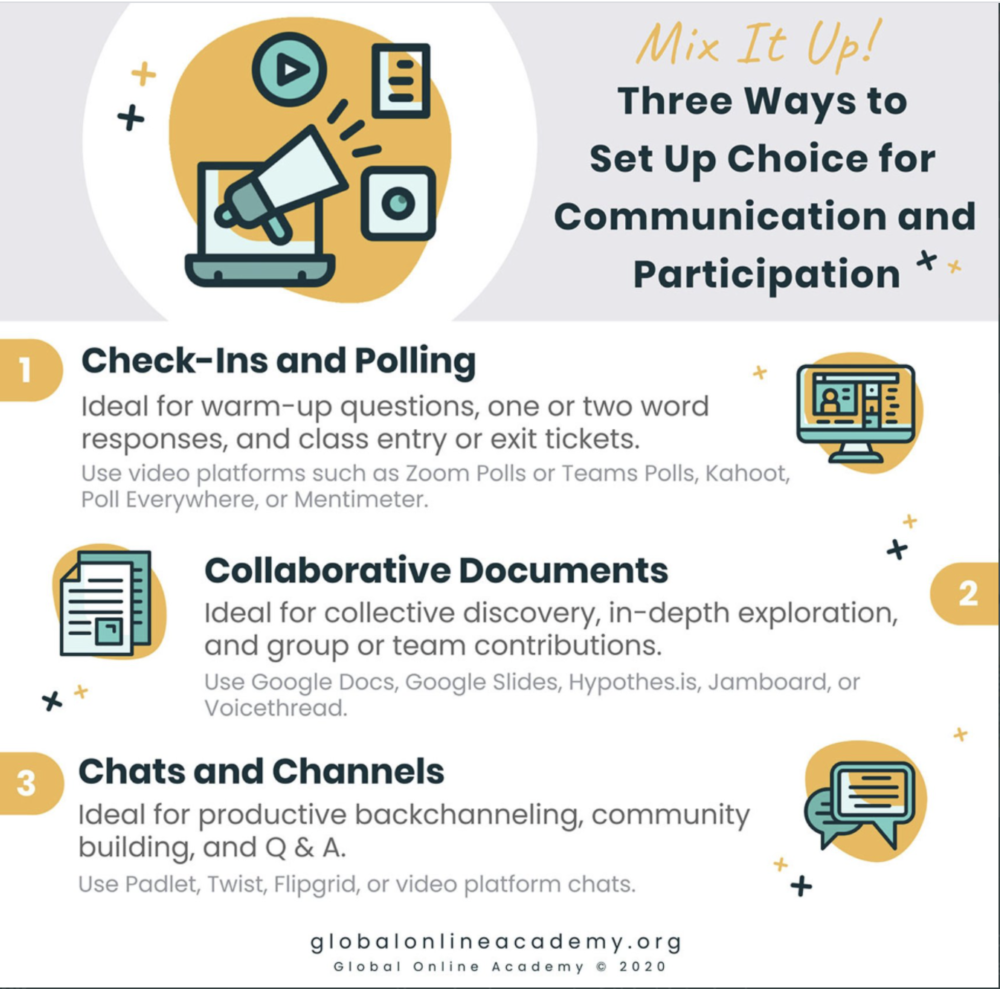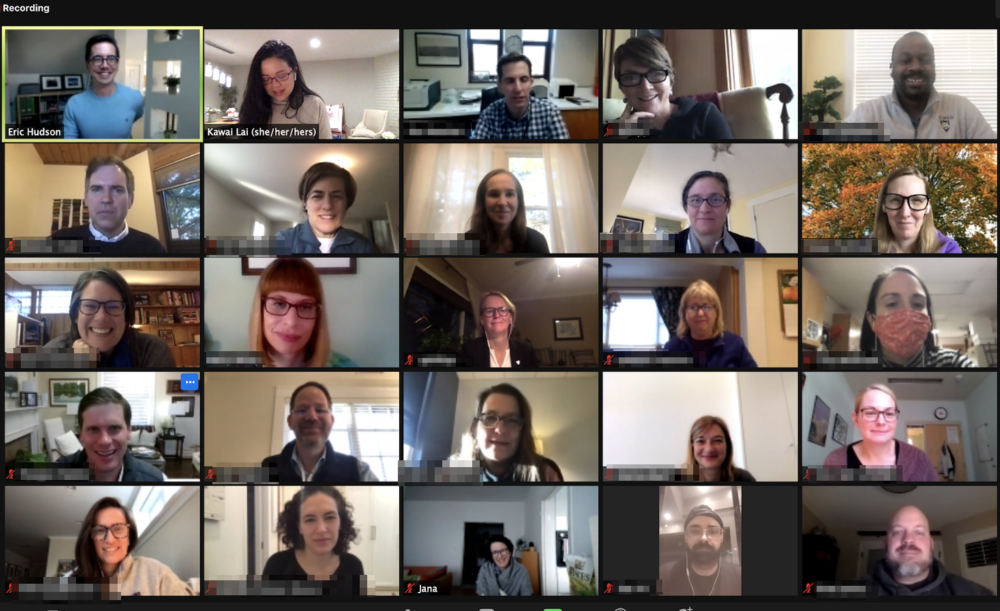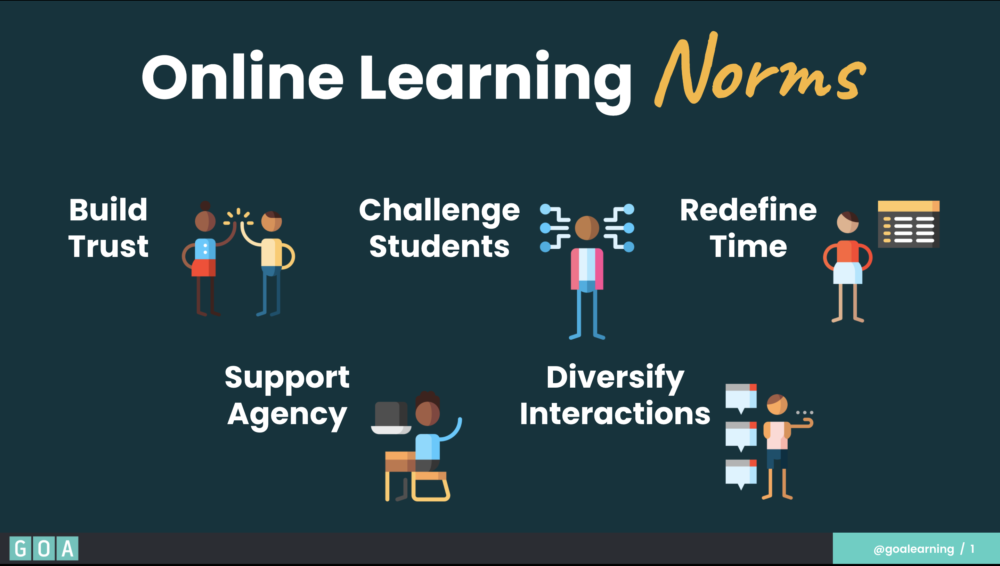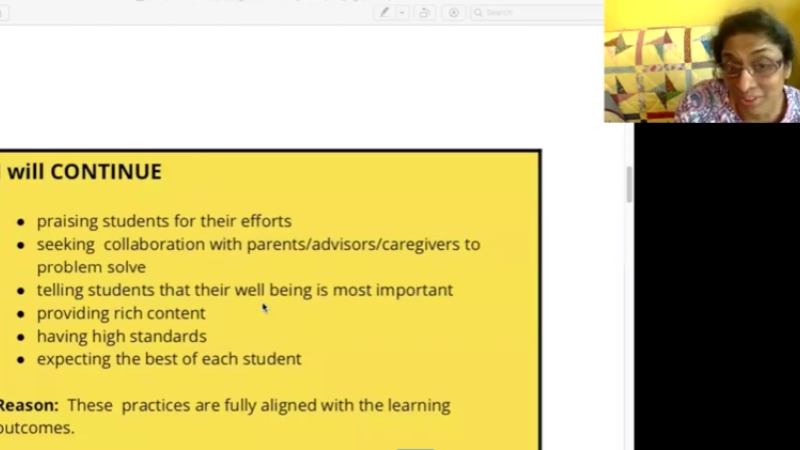2020 Year-in-Review: Five Big Ideas in Professional Learning
The year 2020 was a slingshot moment in education that will have a profound impact for years to come. The twin pandemics of COVID-19 and racial injustice coalesced to create an inflection point for schools to reevaluate their priorities and clarify their purpose. Although much remains uncertain, it’s clear that school will never look quite the same again.
This disruption in education extends not only to students, but also to teachers and school leaders. Many of the trends that were emerging in professional learning in 2019, such as sustainable, job-embedded personalized pathways and ongoing coaching and networked connection, are now accepted premises. Educators are now leveraging online platforms to connect and collaborate in new ways as well as elevate conversations about rethinking school.
In 2020, GOA worked with over 45,000 educators from around the world across its educator courses, educator programs, facilitated workshops, and professional learning partnerships. As we worked with a diverse array of schools, five big ideas emerged as major trends in 2020.
5 Big Ideas in Professional Learning in 2020
1. Equity must be prioritized.
The closure of schools due to COVID-19 has had and will continue to have implications and impacts upon how we “do school.” Distance learning has revealed, reinforced, or magnified preexisting differences in how learners access or engage with learning. While these differences and disparities may have become more evident in our shift to online learning, they are just as present in our brick-and-mortar schools as well.
Schools are rethinking ways in which structures, systems, and routines can be designed to equitably support and enhance learning for all students. Our workshops ask educators to apply principles of equity and justice to their classrooms and schools. What has emerged (if not already present) in this period of reflection and planning is a need in our schools - and society- to explicitly and intentionally focus on matters of anti-racism and equity. For too long, the data and stories of marginalization, erasure, and neglect have not improved, despite good intentions and hopeful efforts.
The goal of any professional learning, ultimately, is to shift educator practice to enhance the learning experience and potential for students. The GOA Professional Learning team recognizes the platform and voice we hold in the field of professional learning and online learning and want to publicly share and model our process of responding to this need with urgency and intention. How might we equitably design for online learning? Join us in February for our new, free course for educators, Designing for Equity.
2. Anytime, anywhere learning is for teachers, too.

In 2020, we saw an expanded understanding of when and where learning can happen. This wasn’t just limited to how students learn; teachers suddenly found themselves with an abundance of options for how they could engage with professional learning.
The rise of online learning means that educators have greater access to professional learning opportunities and the ability to personalize and customize their learning. What’s more, professional learning is no longer a one-off, day-long event in schools; ongoing, year-round professional learning is now the norm, not the exception.
At GOA, we saw educators leverage the online platform for professional learning in a myriad of ways. Over 75 schools took advantage of our synchronous one-hour facilitated workshops on Zoom as a way to collectively tackle critical questions around hybrid and online learning. GOA also launched its Quick Wins Series to respond to real-time needs through bite-sized, asynchronous professional learning delivered by email. Join us for Quick Wins Series 2: Assessment Design.
What became apparent to us in the fall of 2020 is that given the demands of this school year, teachers don’t have the bandwidth to engage with time-intensive professional learning. Therefore, we have seen more educators opt for bite-sized professional learning with clear time constraints to provide structure and support as they face an education landscape that's in flux.
3. Build an educator community around “beautiful work.”
Educator Reflection: From Grading to Feedback
Ron Berger writes of his classroom culture, “What I value most in teaching is the opportunity to support students to do beautiful work… We use models of excellence to set the standards for our work.” We’ve re-affirmed this year that the power of sharing beautiful work applies to teacher culture, too. The current response to COVID-19 and the demands it places on teacher practice are unprecedented. Teachers do not have longitudinal studies and well-established reference guides for navigating this new landscape. What they do have is each other.
Teachers are leaning into teacher networks. Twitter offers both company and consultation for on-going support. Voices like Jennifer Gonzalez’s Cult of Pedagogy continue to provide practical strategies for student-centered design adapted to online and hybrid learning. We’ve seen people seeking solutions to new challenges, educators offering ideas to borrow, and communities sharing what they are learning. Social media is elevating teacher voices and offering insights.
Teachers are learning together. In our summer Design Bootcamps, teachers engaged in an intensive week of planning online experiences, participating in giving and receiving feedback, borrowing inspiration from one another, and designing with expertise and enthusiasm.
Teachers are also leading together. It’s vulnerable work to share ideas-in-progress in community, to try new things, and to adapt what we do. Berger defines “wise practice” in his classroom as “studying great work to learn what we can borrow and what strategies we can learn.” Wise practice abounds among today’s teachers. More than ever, and with students at the center, we’re admiring educators bravely leading educators.
4. Leaders have critical influence over the conditions in which teachers and students work.

At a time when so much is uncertain and so much is out of our control, what is the role of the school leader? In our program Leading Teachers Online, 150 district and school leaders from around the world set the agenda for monthly discussions on Zoom, and their primary focus is supporting teachers: helping them be well, helping them manage the rapid transformation of their jobs, and helping them learn with and for their students. Join us in January for the next run of Leading Teachers Online.
Leaders find comfort and confidence in the idea that they can have a positive influence on the conditions in which teachers and students work. Focusing on clarity, consistency, and transparency helps leaders communicate, design support systems, and allocate resources. When leaders simplify teachers' jobs to core responsibilities, minimize extraneous meetings, and encourage boundary-setting, teachers can better manage their day-to-day work. When leaders model vulnerability, create open forums for teacher and student-driven conversations, and elevate and celebrate accomplishments (no matter how small), they create psychological safety and build community. As authors Eric McNulty and Leonard Marcus write, effective leaders “seek order rather than control.” For more on what participants in Leading Teachers Online want to keep post-COVID, read this article.
5. All teachers need an online teaching skillset.

2020 is the year where teachers had to learn quickly how to teach online. While there’s no doubt that school communities want to be together in person, there’s also a reality: online learning is here to stay.
Now more than ever, people will be learning at school, at home, and everywhere in between. Teachers will need to have the fluency to be able to teach students whether they are online or in-person. Schools will be looking for teachers who have this skillset, as some students and their families will seek the flexibility and the personalization of unique online and in-person school models. GOA developed its five norms and five rubrics for high-quality online learning as a way to support educators and school leaders in growing and assessing this skillset.
As we all learned this year, you can’t simply replicate what worked well in-person in an online space. There needs to be a recognition of the unique skills required to move fluidly between those environments. GOA’s Designing for Online Learning series of six courses helped prepare educators for online learning and also provided pedagogical practices to support the development of student agency, assessments for learning, and establishing relationships that are vital to creating a positive learning environment that can absolutely happen online.
Finally, consider this quote from the authors of Whiplash: How to Survive our Faster Future, “The people who will be the most successful in the coming decades will be those who can tap into their networks to learn the things they need to meet the new challenges as they arise.” We are grateful for the GOA network of students, teachers, and leaders who are tapping into the network to learn as they meet the new challenges and opportunities in the coming decade.
What do you think are the big ideas in professional learning this year? Share with us on Twitter @GOALearning using #GOALearning.
GOA has just announced its new slate of educator courses and facilitated workshops for 2021! Register today.



